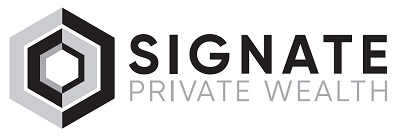In a year where simply keeping the doors open was a challenge for many businesses, finding the funds for tech upgrades might feel like a daunting prospect. The good news is, the consumerisation of information technology and the digital revolution have slashed the cost of IT products and services.
Cloud computing means you no longer have to invest big bucks upfront on hardware and software. And there’s been an explosion in the number of low-cost apps that even the smallest of enterprises can use to automate some operations.
On top of this, there’s a compelling business case for investing in information and communication technology (ICT): companies with the largest increase in ICT spending grow their revenue up to three times faster than companies that spend the least, according to Xero research.
So how should small businesses be investing their ICT budgets in 2021? We asked Xero Small Business Advocate Angus Capel for some tips. Here are his top five priority areas.
1. Online and cashless payment technology
If you don’t already have them in place, implementing an online gateway and contactless payment technology should be top of your tech to-do list this year, Capel says.
He argues that customers are voting with their (electronic) wallets, and businesses that aren’t able to accept online and digital payments are at growing disadvantage.
“We’re starting to see people walking out of shops if they see a ‘cash only’ sign,” he explains. “We also know that businesses that offer online invoice payments are paid twice as fast as those that don’t.”
It’s a view backed up by data. According to NAB’s Cashless Retail Sales Index October 2020, COVID-19 has accelerated the flight from cash, with cashless retail sales showing year-on-year growth of 17.5 per cent. Meanwhile, the Reserve Bank’s Consumer Payments Survey 2019 found just under a third of in-person payments were made in cash that year.
NAB’s Guide to Online Payment Gateways for small businesses provides guidance on implementing a gateway that can help you process transactions and accept payments securely via your web site.
2. Cloud accounting
It’s difficult to run a successful business if you rely on a stack of receipts in a shoebox or a collection of spreadsheets to monitor your incomings and outgoings. Switching to a cloud accounting solution can help you more effectively take control of your financial position and manage your inventory, invoicing and cash flow.
“By automating your ‘finance department’ you can eliminate repetitive manual processes and the double and triple handling of data,” Capel says.
“And with a cloud accounting and payroll solution as your foundation, it’s easy to add other apps that can help you become more efficient in other areas, such as inventory and expense management.”
3. People management technology
If you’re in expansion mode, or hiring for the first time, ensuring you comply with industrial relations legislation and paying your team correctly is critical. Getting it wrong can result in legal and regulatory action, reputational damage and, if you’re found to have underpaid employees, a bill for the difference, Capel points out.
Workforce management software can help you create and distribute rosters, manage timesheets and onboard new starters. Popular solutions such as Tanda, Deputy and Employment Hero integrate with leading accounting and payroll platforms. Using one of them can help to ensure you’re doing things properly, Capel believes.
“It’s important to have the right technology in place so you can focus on growing your business with confidence,” he says. “For anyone with employees, or looking to take them on, it’s definitely worth looking into one of these solutions or asking your adviser about them.”
4. An online presence
Finding a website, a social media presence and a string of good reviews when they google your business name is as reassuring for customers as a word-of-mouth recommendation used to be. If there’s nothing to see, they’re less likely to stop and spend.
Ensuring you have a strong online presence is critical, Capel says.
“Making sure you’re visible, and in a beautiful way that gives customers the confidence to engage with you, is massive now. Companies that aren’t online risk losing a lot of business to competitors that look slicker and more professional.”
A basic website can be had for as little as $500, while social media marketing can cost as little, or as much, as you’re willing to spend.
“If that’s where your customers are, then that’s where you need to be,” Capel says. “Start small, tailor your campaign and measure the results.”
5. Cybersecurity
The threat posed by cybercrime is real and rising – so much so that the Federal Government last year announced it would invest an additional $1.67 billion over the next decade to help businesses protect themselves against attack.
Taking sensible measures to reduce your risk of falling victim is vital. If you’re not sure where to start, Capel suggests talking to your accountant, bookkeeper or business adviser.
“An adviser can provide insight into best practice for your industry or connect you with a specialist, if necessary,” he says.
NAB’s cyber safety hub for small businesses provides guidance and advice about common threats and actions small businesses can take to strengthen their defences, including encrypting data and employing multi-factor authentication to reduce the risk of identity theft.
Practising good cyber hygiene – think installing software updates promptly, changing passwords regularly, running scheduled back-ups and training staff to be alert to phishing scams – will also help you protect your business.
Reproduced with permission of National Australia Bank (‘NAB’). This article was original published at https://business.nab.com.au/starting-strong-your-2021-tech-to-do-list-43827/
National Australia Bank Limited. ABN 12 004 044 937 AFSL and Australian Credit Licence 230686. The information contained in this article is intended to be of a general nature only. Any advice contained in this article has been prepared without taking into account your objectives, financial situation or needs. Before acting on any advice on this website, NAB recommends that you consider whether it is appropriate for your circumstances.
© 2020 National Australia Bank Limited (“NAB”). All rights reserved.
Important: Any information provided by the author detailed above is separate and external to our business and our Licensee. Neither our business nor our Licensee takes any responsibility for any action or any service provided by the author. Any links have been provided with permission for information purposes only and will take you to external websites, which are not connected to our company in any way. Note: Our company does not endorse and is not responsible for the accuracy of the contents/information contained within the linked site(s) accessible from this page.



